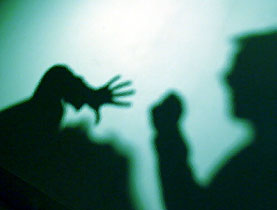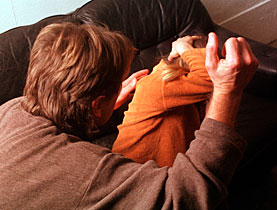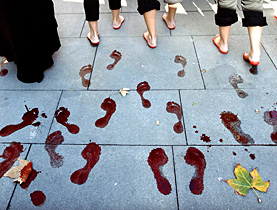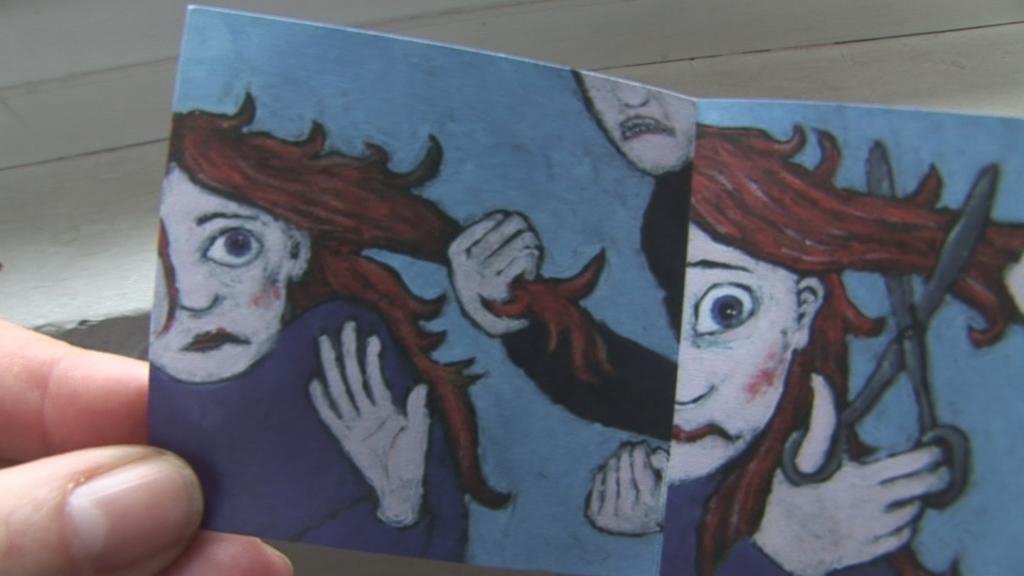Homing in on domestic violence

Despite growing awareness of the problem, domestic violence remains a thorny issue in Switzerland.
In an effort to glean new perspectives via lectures and workshops, around 100 professionals are gathering in Lucerne for a two-day conference on domestic violence.
The conference, which opened on Friday, is organised by the universities of Lucerne and Zurich in conjunction with Lucerne’s domestic violence education centre.
Switzerland’s first shelter for battered women opened in Geneva in 1977.
Today there are 18 such facilities around Switzerland, offering a total of 200 beds. Each year, more than 1,000 women benefit from these safe havens. But unfortunately, there’s not enough room for everyone.
“Nationwide, around half of the women seeking help each year are turned away because the shelters are full,” said Andrea Wechlin, a social worker based at the Frauenhaus Luzern shelter.
According to a study by the Federal Gender Equality Office, the country would need 980 beds to cope with the demand: 670 in German-speaking Switzerland, 260 in the French-speaking section and 40 in the Italian-speaking part.
“I think it’s a scandal that the shelters have to send people away,” said Peter Mösch Payot, a lawyer and criminologist at Lucerne University. His comment drew applause from conference-goers.
It is believed that one in ten Swiss women is abused by a partner at some time in her life.
Male victims
But as Wechlin is quick to point out, women are certainly not the only ones affected by domestic violence.
Regarding male victims, Wechlin notes that men often fail to report incidents because they worry that nobody will believe them.
Meanwhile, it is estimated that anywhere from ten to 30 per cent of children in Switzerland have witnessed violence involving their parents. Sometimes children and young people turn the tables.
“Like violence against the elderly, so-called ‘parent-battering’ is a phenomenon that has attracted attention only recently,” Wechlin said.
Yet it’s not just the victims who need help, according to psychologist Klaus Mayer, who works with violent perpetrators in the Zurich area.
Helping perpetrators
“In Switzerland, most work is done with perpetrators on a one-on-one basis,” said Mayer. Group sessions are also common, couples’ counselling less so. In his presentation, he remarked that there has been a huge increase in European programmes to counsel those who have battered a partner. In 1984 there were none; today there are hundreds – mainly in northern and western countries.
Switzerland has 21 centres where perpetrators can get help, nine of which offer programmes for violent women.
“Women who hit their partners are often trying to defend themselves from dominance and control rather than from physical abuse,” said Mayer.
Interestingly, male perpetrators are more likely to stick with a counselling programme than their female counterparts – a phenomenon that Mayer says is puzzling. He also notes that male victims are less likely than females to feel helpless and afraid. Regardless of who attacked whom, Mayer says more follow-up work is needed to ensure that the affected couples make progress in their relationships.
Collaboration needed
As several speakers pointed out on day one, more cooperation is needed between the authorities and social workers who deal with domestic violence on a regular basis.
Yet as Mösch Payot noted, data protection laws make it harder for individual agencies to share information. Meanwhile, finances are also an issue. For example, even the Swiss Institute for the Prevention of Violence has had to scale back its manpower since its establishment in 2003. Its material budget is currently about SFr230,000 ($225,000) per year.
In her speech given to open the conference, Yvonne Schärli, minister of justice and security in Lucerne’s cantonal government, emphasised the need to find out what triggers domestic violence in the first place. She listed secure jobs, cultural integration plus affordable housing and medical care as important building blocks in the creation of happy homes.
As the saying goes, prevention is better than cure.
Susan Vogel-Misicka in Lucerne, swissinfo.ch
Up to one in five women in Switzerland falls victim to domestic violence – physical or sexual aggression, according to official estimates.
Up to two out of five have faced mental abuse.
Between 2000 and 2004 an average of 25 women aged over 14 and ten men died as a result of domestic violence each year.
In the same period, 45% of attempted killings, successful or not, took place in a context of domestic violence.
In 2003 domestic violence was made an offence for which proceedings are brought directly by the public prosecutor.
Measures, including constraining orders, can be imposed against perpetrators, as part of a new clause in the civic law which took effect in 2007.
Switzerland is combating domestic violence at national and cantonal levels.
A person is considered to be in a situation of domestic violence if his or her physical, mental or sexual integrity is threatened or violated by someone in the family circle, or a present or past partner.
Domestic violence is characterised by violence or threats of violence, but also by repeated insults or harassment.

In compliance with the JTI standards
More: SWI swissinfo.ch certified by the Journalism Trust Initiative




You can find an overview of ongoing debates with our journalists here. Please join us!
If you want to start a conversation about a topic raised in this article or want to report factual errors, email us at english@swissinfo.ch.